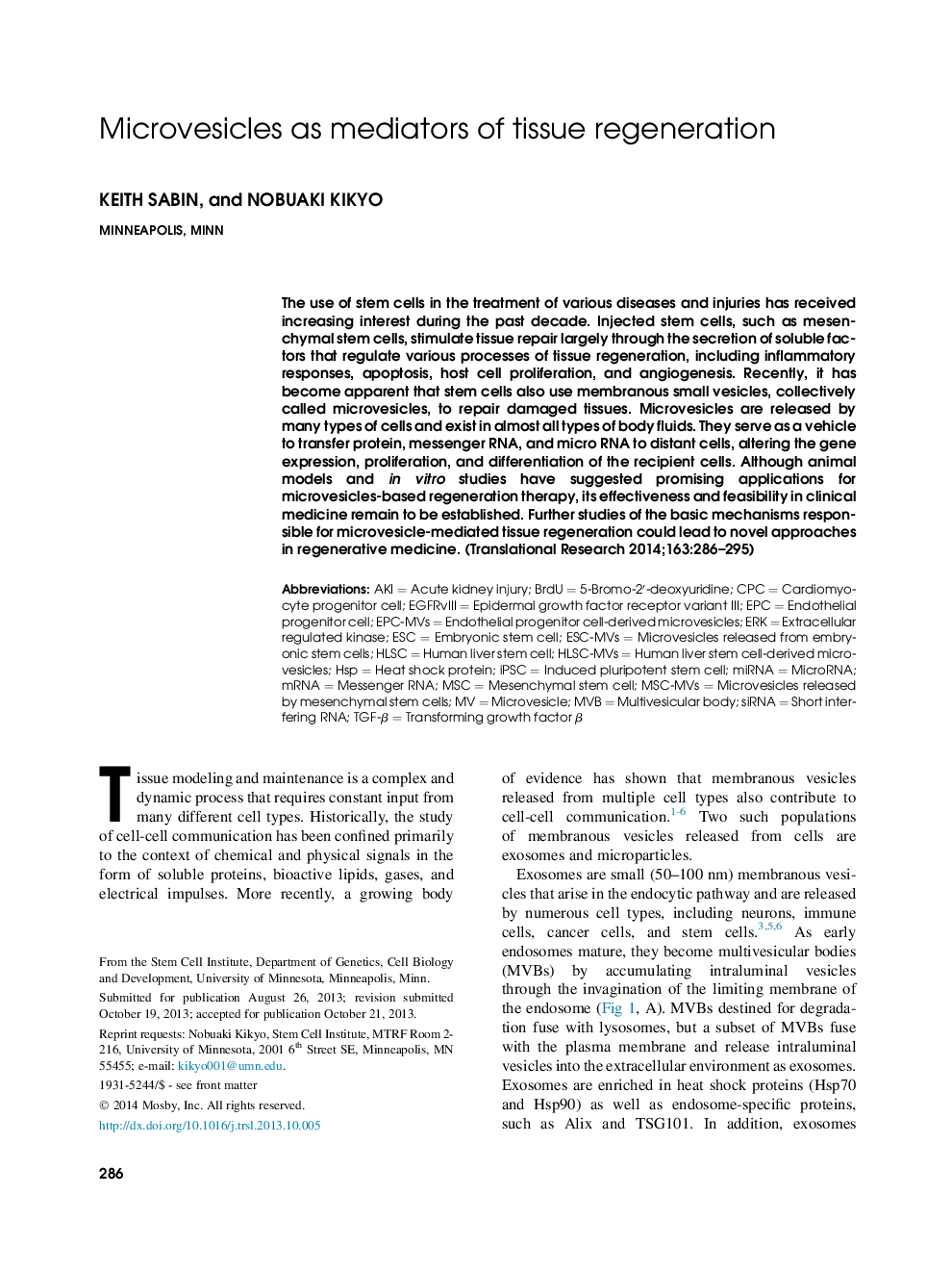| Article ID | Journal | Published Year | Pages | File Type |
|---|---|---|---|---|
| 3840647 | Translational Research | 2014 | 10 Pages |
The use of stem cells in the treatment of various diseases and injuries has received increasing interest during the past decade. Injected stem cells, such as mesenchymal stem cells, stimulate tissue repair largely through the secretion of soluble factors that regulate various processes of tissue regeneration, including inflammatory responses, apoptosis, host cell proliferation, and angiogenesis. Recently, it has become apparent that stem cells also use membranous small vesicles, collectively called microvesicles, to repair damaged tissues. Microvesicles are released by many types of cells and exist in almost all types of body fluids. They serve as a vehicle to transfer protein, messenger RNA, and micro RNA to distant cells, altering the gene expression, proliferation, and differentiation of the recipient cells. Although animal models and in vitro studies have suggested promising applications for microvesicles-based regeneration therapy, its effectiveness and feasibility in clinical medicine remain to be established. Further studies of the basic mechanisms responsible for microvesicle-mediated tissue regeneration could lead to novel approaches in regenerative medicine.
